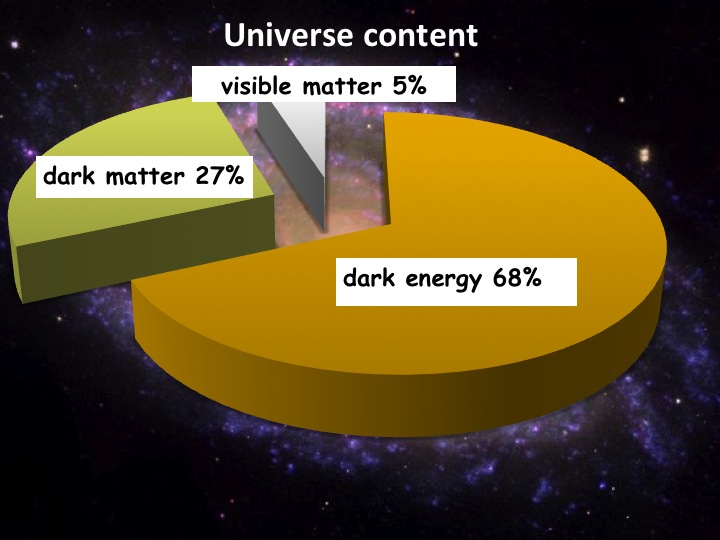Ordinary observable matter like stars and planets makes up a measly 5 of the universe the other 95 universe is made up of invisible dark energy 68 and dark matter 27 that means there s 95 of the universe that we don t know about yet

The Enigma of the Universe: Unveiling the Invisible

Did you know that the vast majority of our universe remains shrouded in mystery? Contrary to what we once believed, ordinary matter, such as stars and planets, constitutes only a measly 5% of the cosmos. So, what lies beyond our reach? Brace yourself, for we are about to embark on an extraordinary journey into the hidden realms of dark energy and dark matter.
Dark Energy: Illuminating the Expanding Universe

Imagine a force so powerful that it propels the universe to expand at an ever-increasing rate. This enigmatic phenomenon, known as dark energy, constitutes a staggering 68% of the universe. While invisible and intangible, dark energy perceivably shapes the destiny of our cosmos.
Scientists grapple with numerous questions surrounding dark energy. Is it a pervasive property of space, residing within every nook and cranny of the universe? Or is it an intrinsic characteristic of a hypothetical substance called the cosmological constant? By delving into these perplexing queries, we inch closer to understanding the expansive nature of the universe.
Dark Matter: The Stealthy Architect
While dark energy pulls the strings of cosmic expansion, an equally elusive entity, known as dark matter, lurks in the shadows. Comprising approximately 27% of the universe, dark matter exerts gravitational forces that sculpt the cosmic landscape.
Despite its name, dark matter does not emit, absorb, or reflect light, rendering its detection incredibly challenging. Yet, its presence becomes evident through its gravitational interactions with visible matter. Galaxies, for instance, rotate at speeds defying the laws of gravity, indicating the existence of unseen mass. Dark matter forms invisible halos around galaxies, providing the underlying structure for their formation and stability.
Unraveling the true identity of dark matter has captivated the minds of scientists for decades. The possibilities range from undiscovered subatomic particles to alternative theories of gravity. To bring light to this cosmic puzzle, researchers employ a myriad of observatories, particle accelerators, and high-tech detectors.
Through tireless exploration and examination, scientists strive to unlock the secrets veiled within dark matter and dark energy. The untapped knowledge beckons us to broaden our understanding of the universe. As we delve further into the mysteries of the cosmos, we find ourselves on the brink of intellectual breakthroughs that might one day complete the cosmic puzzle.
Source: NASA - What is Dark Energy?
Tags
Share
Related Posts
Quick Links
Legal Stuff

